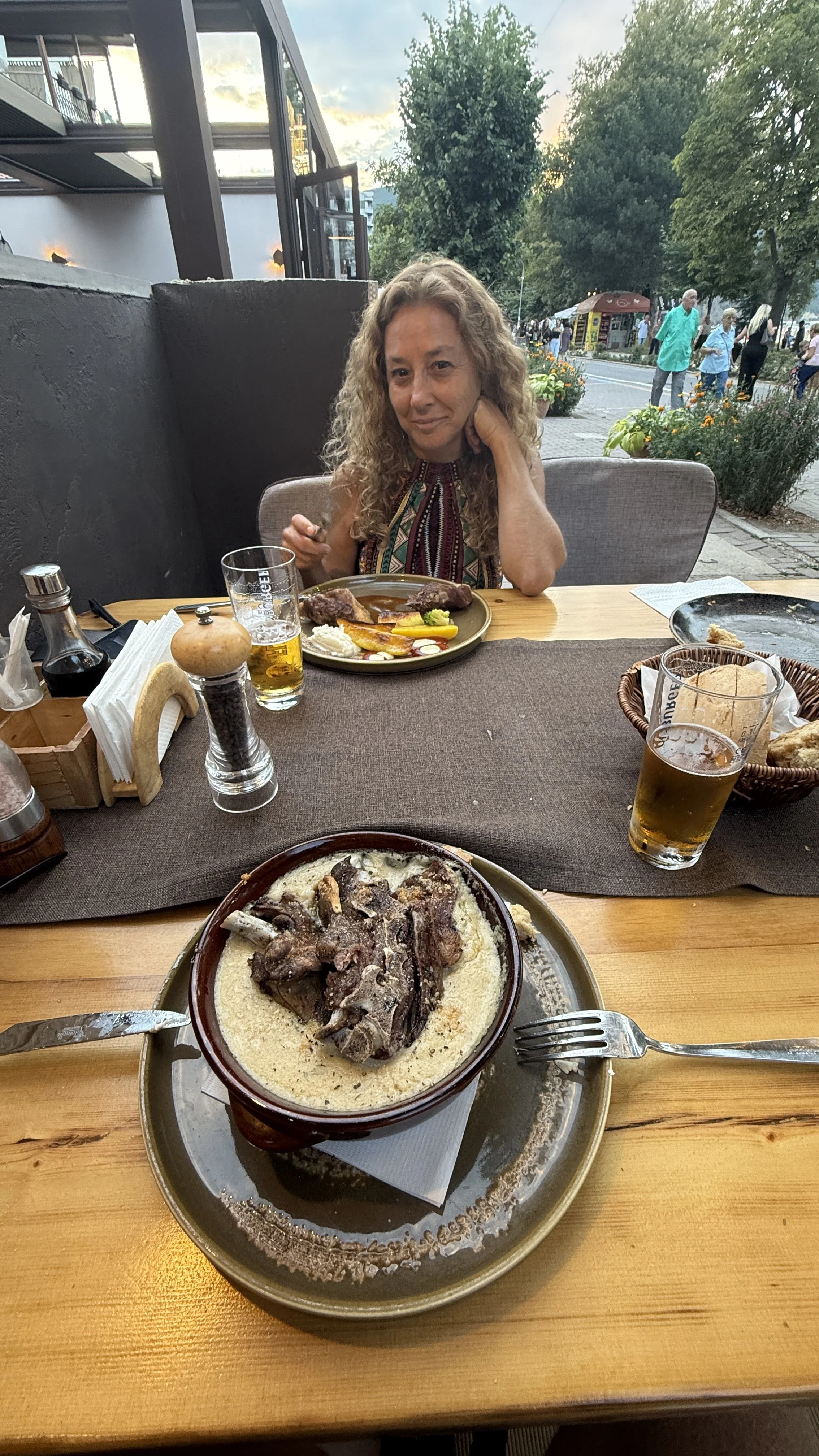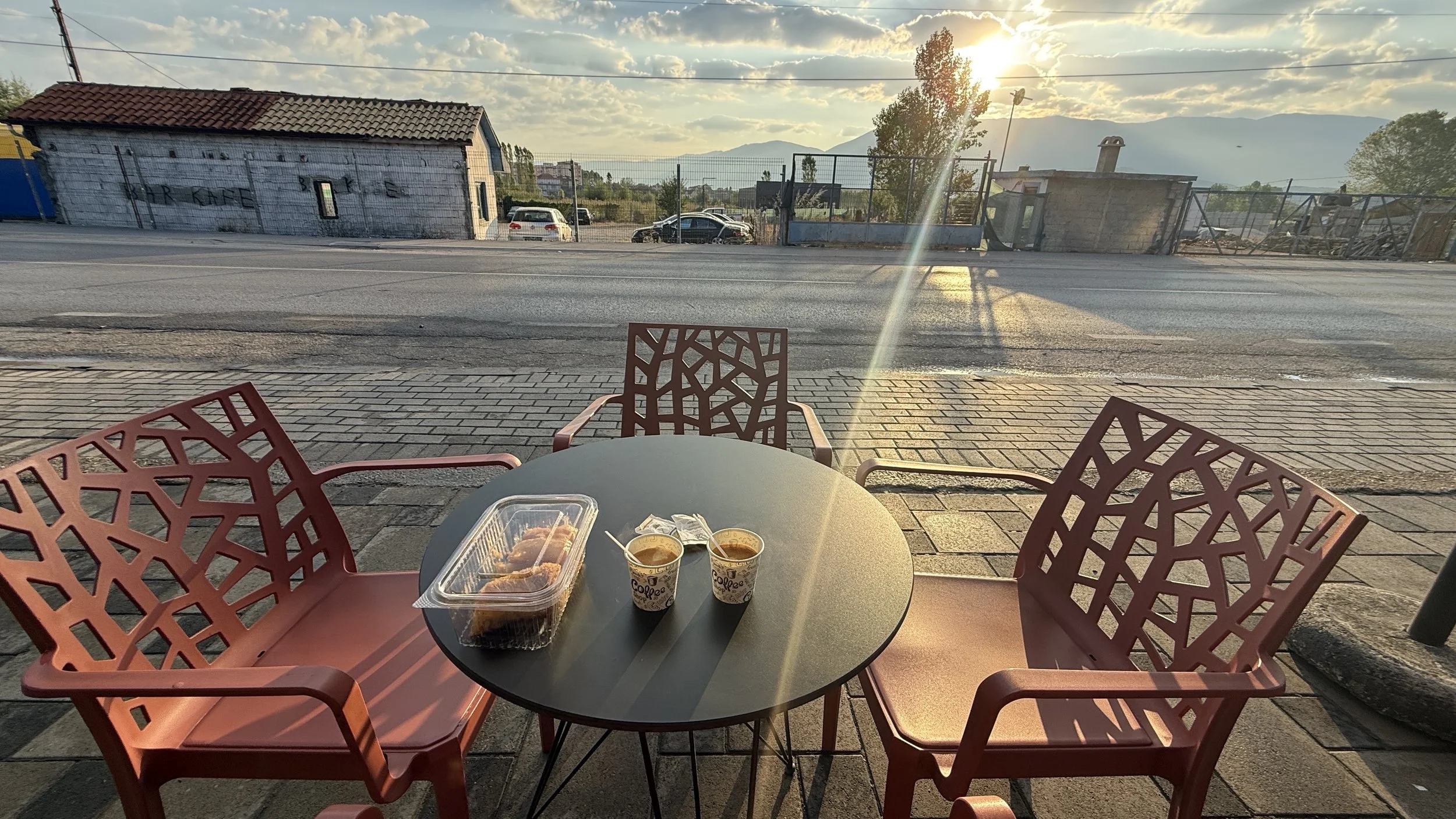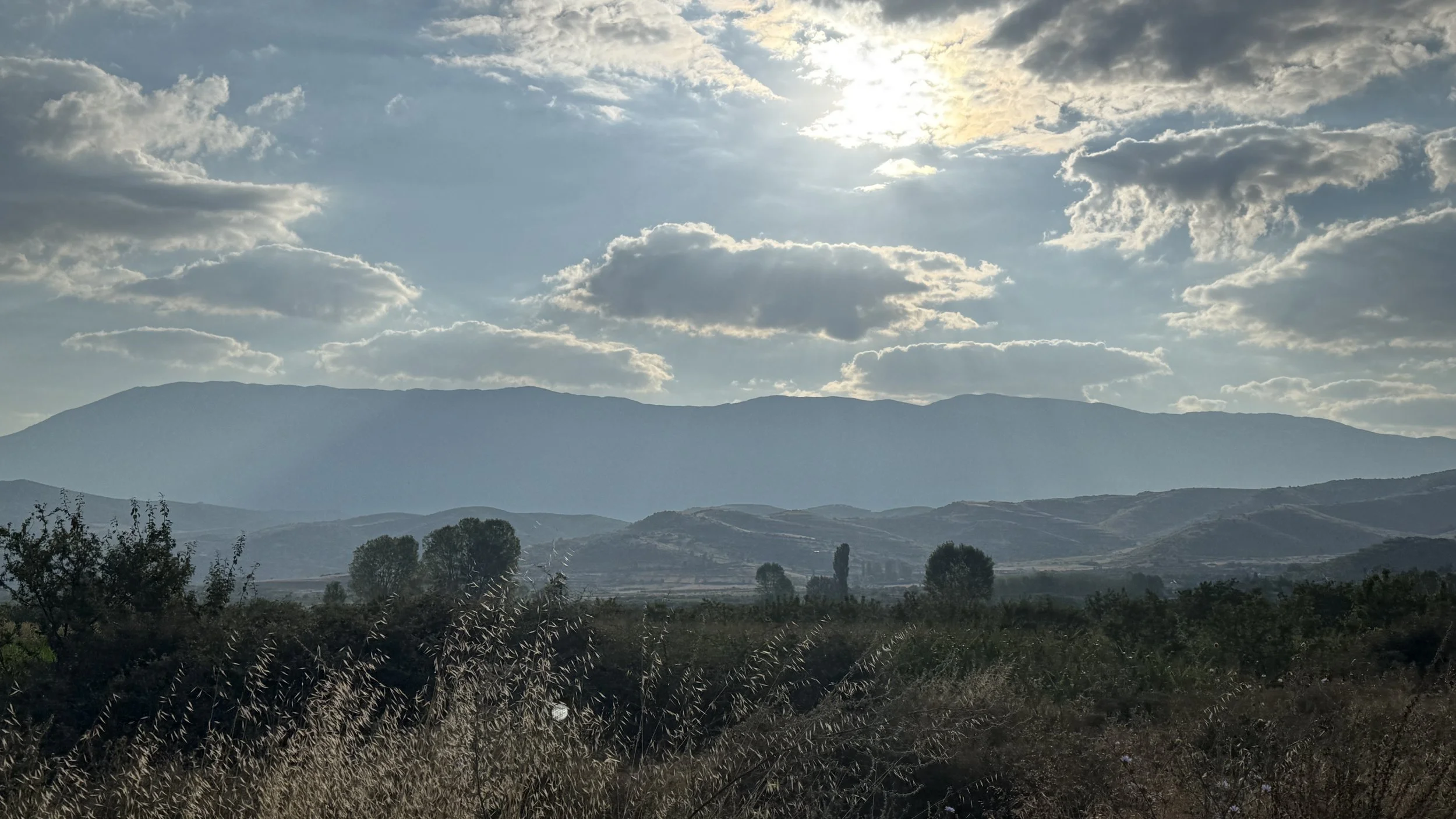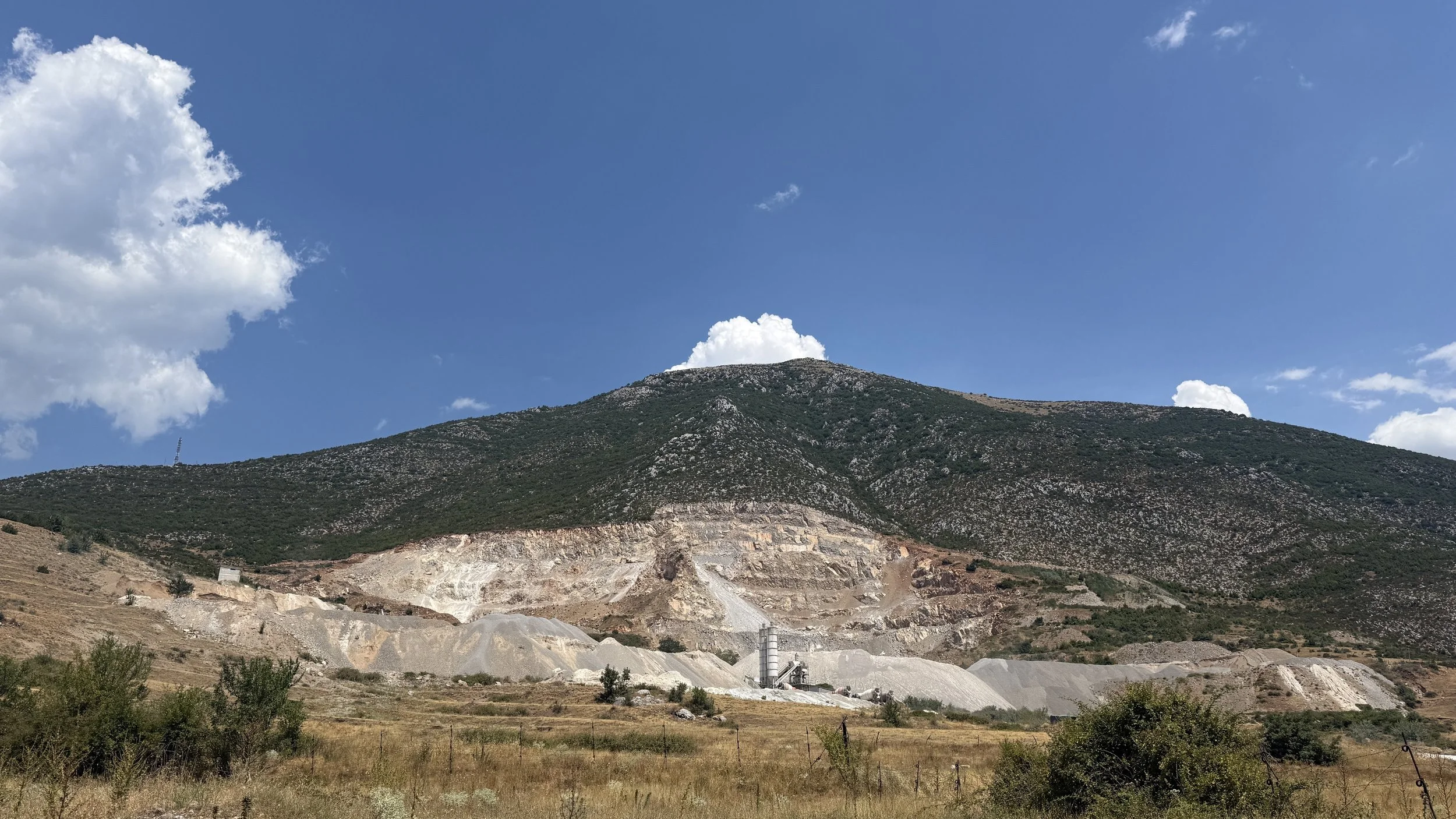Day 82 - August 2nd: The Dig
Pogradec to Bilisht: 31.45 miles / 2,342 total
I have to lead with one of the most exciting discoveries on this journey, literally! After leaving Pogradec and clearing the 1,000’ climb over the pass, I found myself on the Korçë Plateau looking at Prespa National Park to the east. On a dirt road I noticed a number of white tarps. Then under one of them, a group sat having tea and eating. I walked over and saw it was an archaeological dig with students from around the world. Edna was the lead from the Institute of Archaeology in Tirana—I hope I have your name correct! She corrected my description to a "Neolithic Site" where they’ve found pottery and bones from 4,000 B.C. They invited me to sit under the tarp with them and shared tea while we exchanged stories. They identify these sites using imaging and date the finds with radiocarbon dating. They're hoping to find a home here, but haven’t yet. Please let us know where we can follow up on your discoveries.
The dig I saw near Bregas is part of a region full of important prehistoric sites. Archaeologists have found pottery, tools, bones, and fire pits here from as far back as 5000 B.C., showing that people lived and farmed on this plateau thousands of years ago. Nearby sites like Dërsnik and Podgorie have similar finds and help piece together how early humans settled and adapted in this area. A bit farther north, the site at Maliq revealed layers of history from the Stone Age through the Iron Age, including signs of trade and early metalworking. Together, these digs show just how long people have been living and building lives in this part of Albania.
Onto the more mundane... the town of Pogradec is definitely one of the nicer towns in Albania we’ve visited. Situated on beautiful Lake Ohrid and sharing a border with North Macedonia, it has the vibe of a town on the French or Italian Mediterranean. Prices also reflect the luxury—six euros for a Guinness I found at a lakeside Irish bar. Although Albania isn’t in the EU, everyone here takes euros at a 100 to 1 conversion to the local currency, the lek. If planning to visit, bring euros—very few retailers take cards.
For dinner, I finally tried the classic Albanian lamb and yogurt dish that I had read about but hadn’t had a chance to sample. After a starter salad and the lamb, I needed more calories, so I also had pasta with duck ragu and called it a night. Yesterday I woke up with a bit of a sore throat and wasn’t feeling my best, so it was lights out as soon as we returned to the hotel.
At 6:15 AM, I still hadn’t shaken that off feeling but pushed out, hoping I’d get a second wind.
Plan B for breakfast—as the hotel didn’t serve until 8 AM—was two hunks of baklava and some sesame brittle we bought the night before. On my way out of town, I waited patiently for a café, but the first three were full of locals, all smoking. The fourth one was empty. Cafés in this area only serve espresso—no milk, no latte, no frappuccino. Just espresso.
The morning temperature was 61° with big fluffy clouds. The first few kilometers took me away from Lake Ohrid to the south, with North Macedonia and its mountains looming to my left. Unfortunately, I wouldn’t get to punch my North Macedonia country ticket—just a few kilometers away—because of the car rental insurance.
At the top of the 1,000’ climb, another plateau stretched out ahead of me, and in the distance, a notch that I navigated toward with a big range behind it. This was stunning terrain—think the Continental Divide in Wyoming and Colorado. God’s playground.
Several kilometers later, I came through the notch on the mountain into a gradual slope that took me onto the Korçë Plateau, which buttressed up against the mountains of Prespa National Park. My route took me parallel to the range, and in the distance, I saw the mountain abruptly end.
As I descended, I met a 17-year-old named Elke who was on a bicycle. Bright eyes and a big smile—he said hello. We talked for a few minutes, and I continued on until he rode up to me again and asked if he could stay with me while he biked back home. We arrived 15 minutes later, talking about his village and America. He kindly invited me in to get water if I needed. We said our goodbyes and I told Elke to use his charisma and natural sales skills to do great things.
After my meet-up with the archaeologists, I made my way around the end of the range—or so I thought. In Shengjergj, Christina drove up on her way to the hotel and dropped Jax with me so he could run a few kilometers before riding off to get situated. Then, around 30k in Zvezde, we were at the end. Five kilometers later, I made a left at Zemblak and found that the range didn’t end—it just turned. Like all the borders I’ve crossed, the ranges on either side closed in as I came to the final town of Bilisht, where I called it a day at 51k.
Christina met me on the outskirts and we drove back to Hotel Egnatia that sits between the two ranges that funnel into this narrow opening where the border to Greece sits less than 500m from us. It was a glorious day with epic scenery. The only blemish was the dozen or more strip mining operations I passed.
I finally started feeling strong toward the end of the day—tomorrow is looking good.
Thanks for following along and the support.
Cheers,
David.







